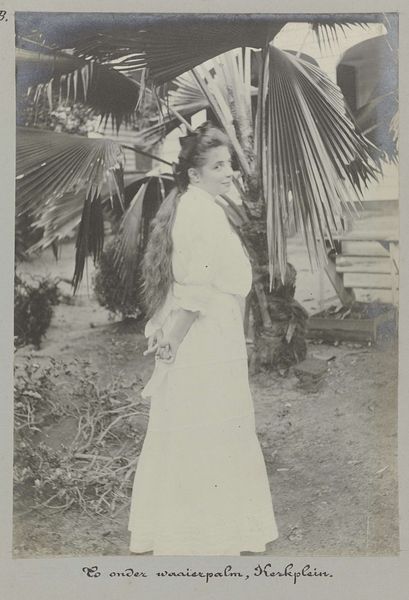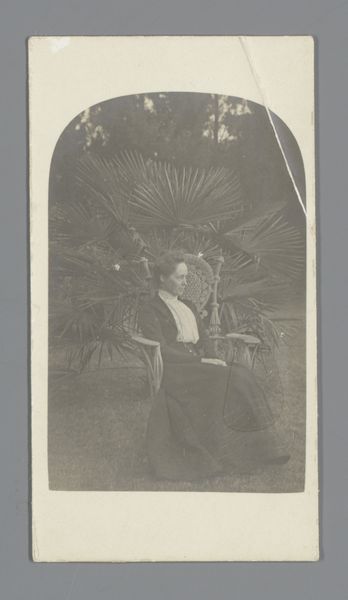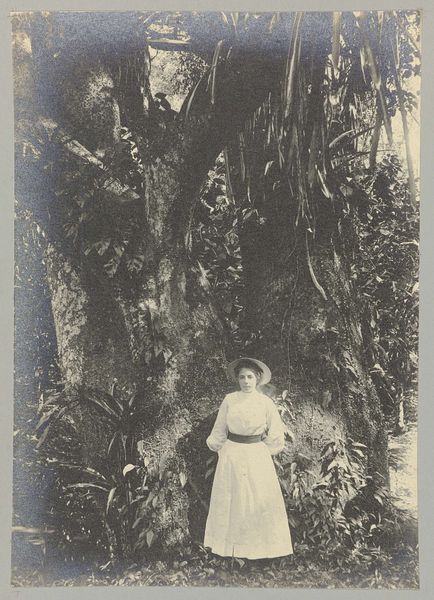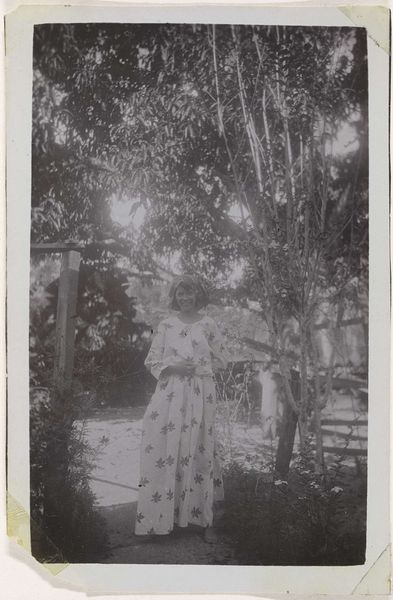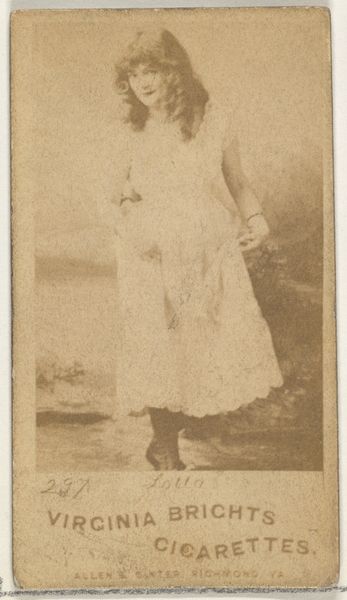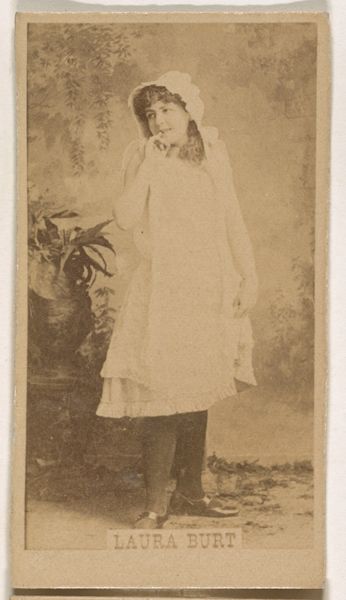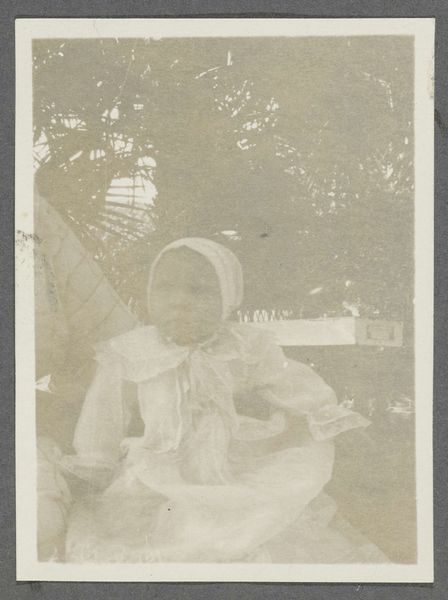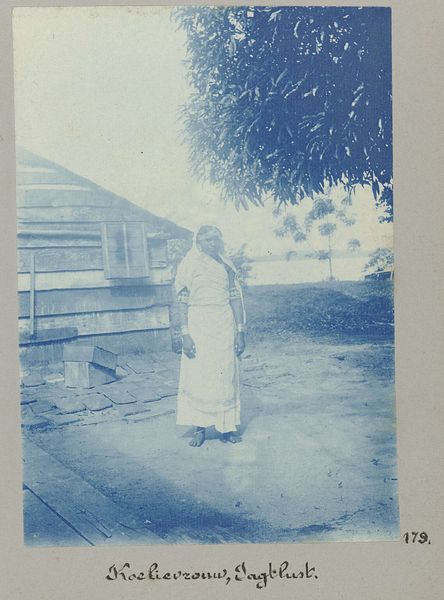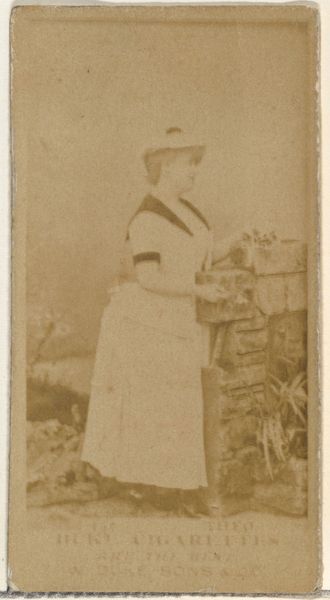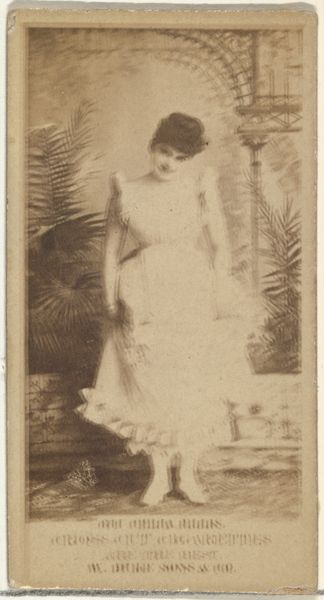
photography
#
still-life
#
pictorialism
#
landscape
#
photography
Dimensions: height 164 mm, width 116 mm
Copyright: Rijks Museum: Open Domain
Editor: Here we have Hendrik Doijer's photograph, "To onder waaierpalm, Kerkplein," taken sometime between 1903 and 1910. It’s a beautiful cyanotype print, giving the whole scene this dreamy, blue-tinged quality. There's a young woman standing in front of a palm tree. It feels very serene and posed. What’s your perspective on this photograph? Curator: This photograph invites us to consider the context of colonial photography and representation. The seemingly simple portrait of a young woman and a palm tree is embedded within a power dynamic. How might the photographer, likely a Westerner, be positioning both the subject and the exoticized landscape for a European audience? It subtly reinforces the idea of the "other" and the colonial gaze. What do you notice about her posture and dress? Editor: She looks very proper, very contained. Almost like a porcelain doll, you know? Her hands are clasped behind her, her gaze is direct but not challenging. Is it intentional to evoke these notions? Curator: Exactly. This image probably aims at evoking a certain civilizing influence that’s very telling of the time. We have to ask: Who is given agency in this image? Who is being observed and controlled? It is key to think critically about how the photographer frames her relationship to the setting, effectively reinforcing social norms through a supposedly neutral medium. Is she "allowed" to stand freely, or is she asked to "perform" the part of a cultivated inhabitant? Editor: That makes me see the image differently. It’s not just a pretty picture, it’s a statement – however subtle – about power and cultural identity. I hadn't considered that before. Curator: It's a perfect example of how art reflects and shapes the social fabric. Even something that appears simple on the surface can hold complex layers of meaning related to identity and control. Editor: Thanks. I’ll remember this conversation next time I engage with a work of art.
Comments
No comments
Be the first to comment and join the conversation on the ultimate creative platform.
